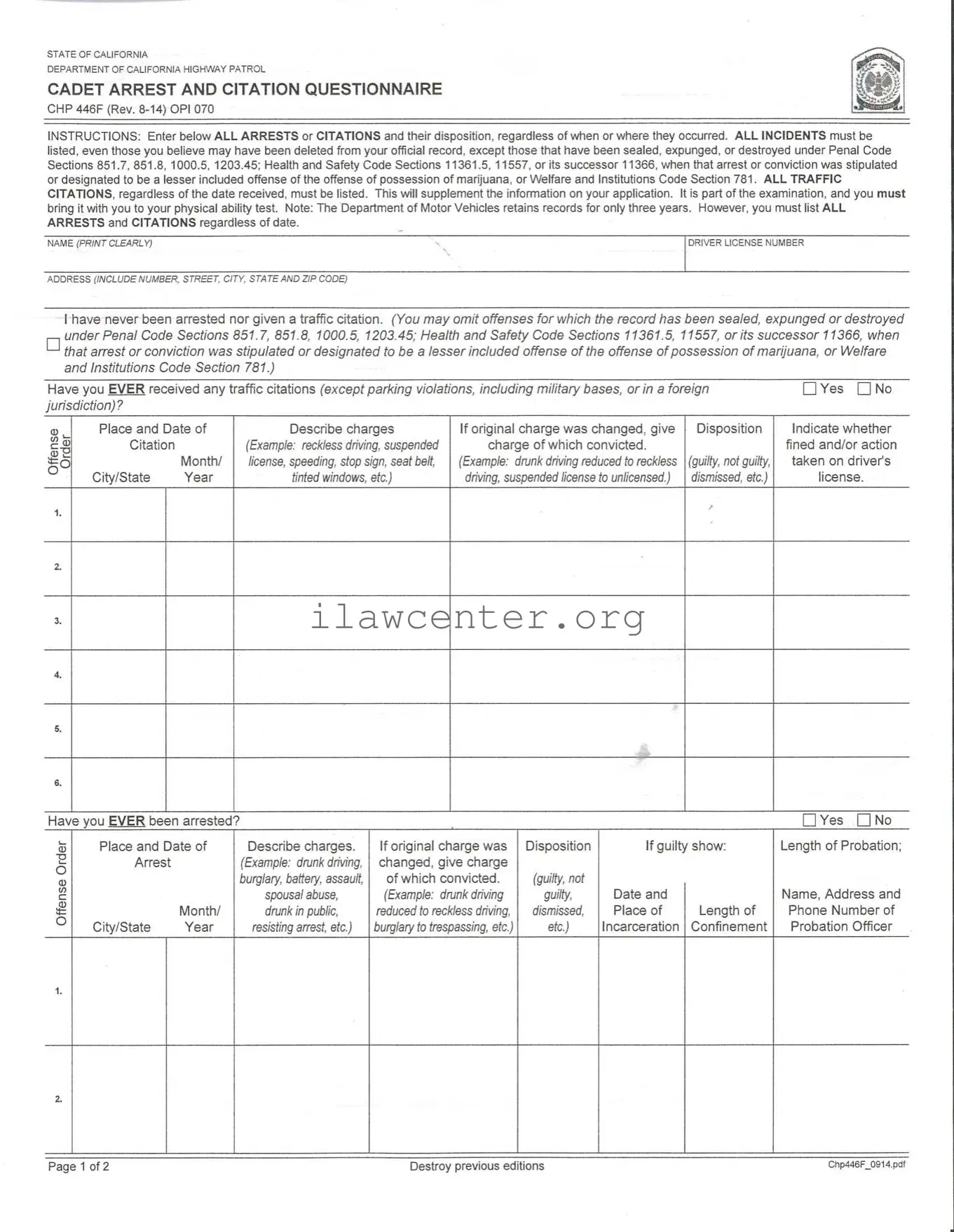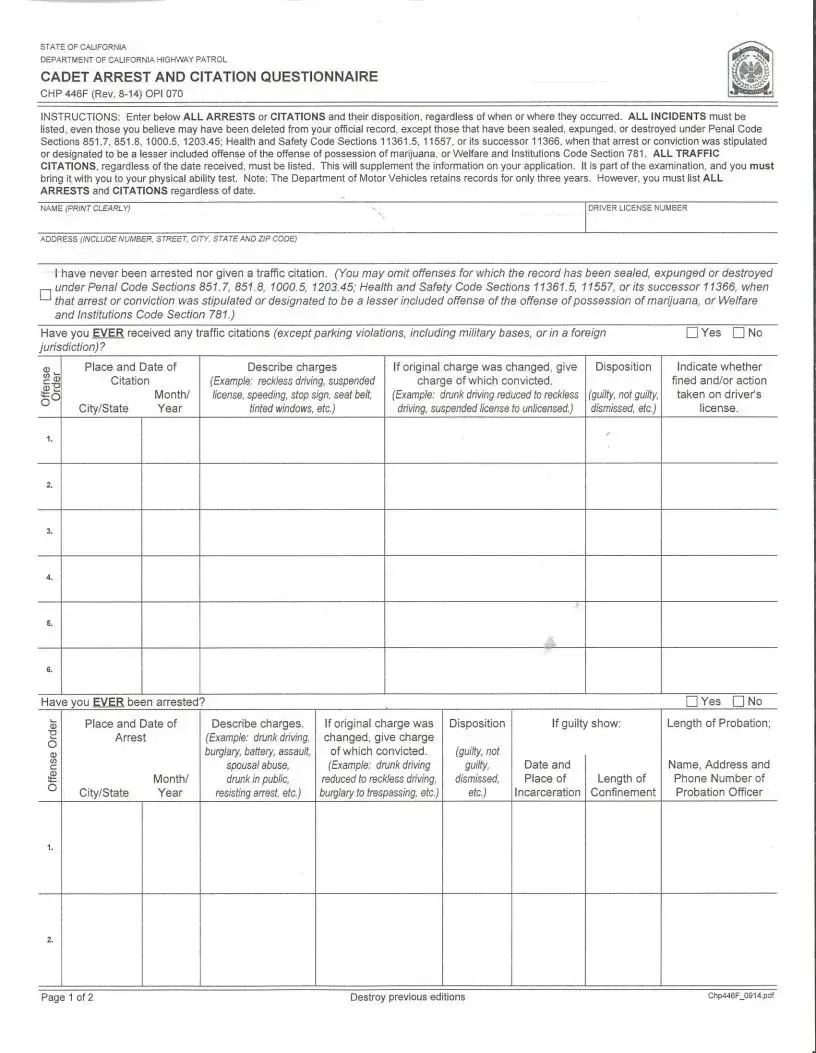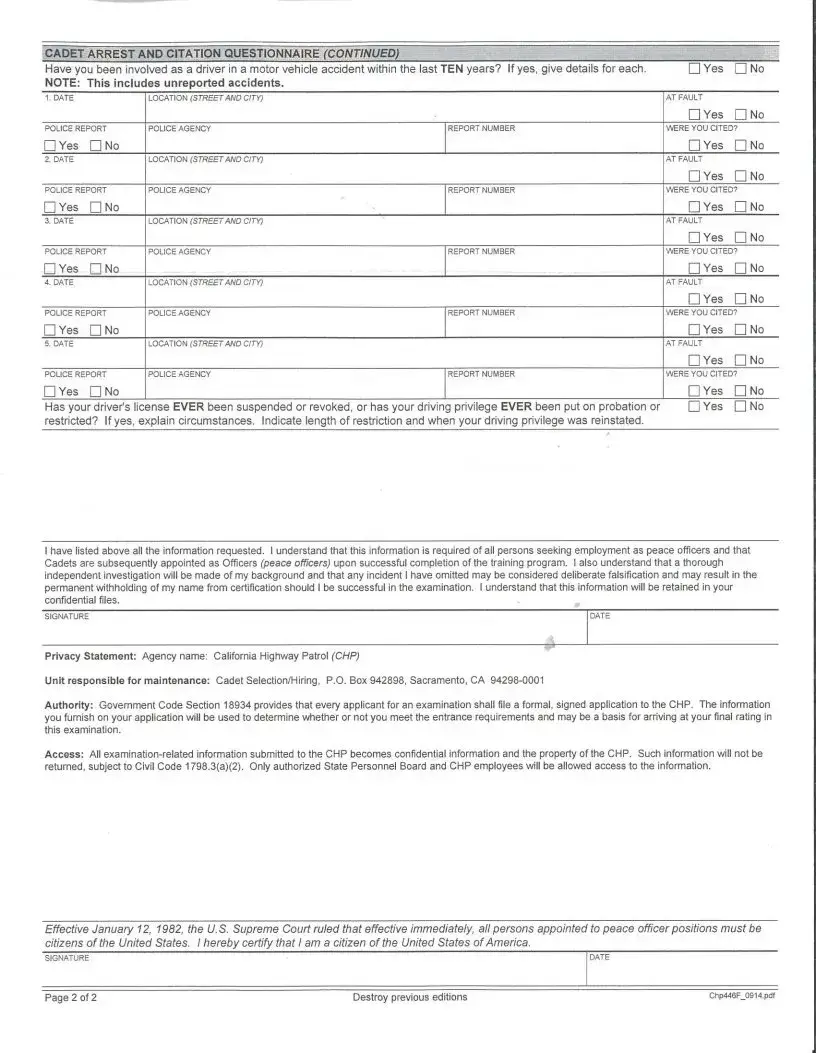Instructions on Utilizing Chp 446F
Completing the CHP 446F form requires careful attention to detail. This form captures information about any arrests or traffic citations you may have received. It’s important to include all relevant incidents, as they will be part of your overall application process. Follow these steps to fill out the form correctly.
- Enter your name: Print your full name clearly at the top of the form.
- Provide your address: Include your complete address: number, street, city, state, and ZIP code.
- Input your driver's license number: Write your driver’s license number in the designated space.
- Indicate if you have never been arrested or cited: Check "Yes" or "No" accordingly.
- List traffic citations: For each citation, provide the following:
- Date and location of the citation (city and state).
- Describe the charges.
- Enter the disposition of the case (e.g., guilty, not guilty, dismissed).
- Indicate if you had any fines or action taken on your driver's license.
- Disclose arrests: Answer if you have ever been arrested (select Yes or No). If Yes, provide all necessary details for each incident:
- List any motor vehicle accidents: Answer if you have been involved in any accidents in the last ten years and provide relevant details for each.
- Check driver's license status: State if your driver's license has ever been suspended or revoked.
- Review your information: Ensure that all information is accurately filled out before signing the form at the bottom.
- Sign the form: Authenticate the document with your signature and date it.
After completion, keep a copy for your records, and bring the original with you to your physical ability test. It is critical that all provided details are truthful and comprehensive. Omitting information could have serious repercussions on your application.


